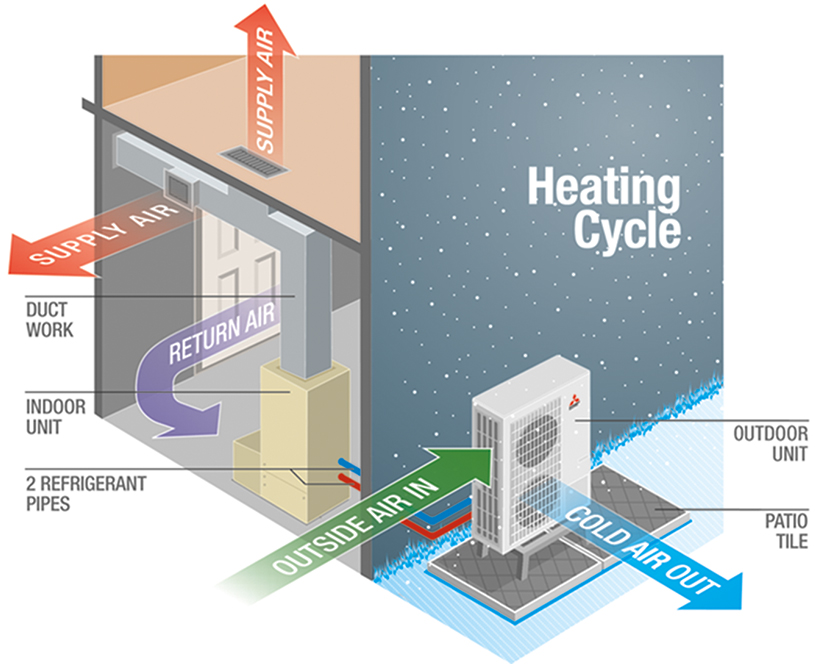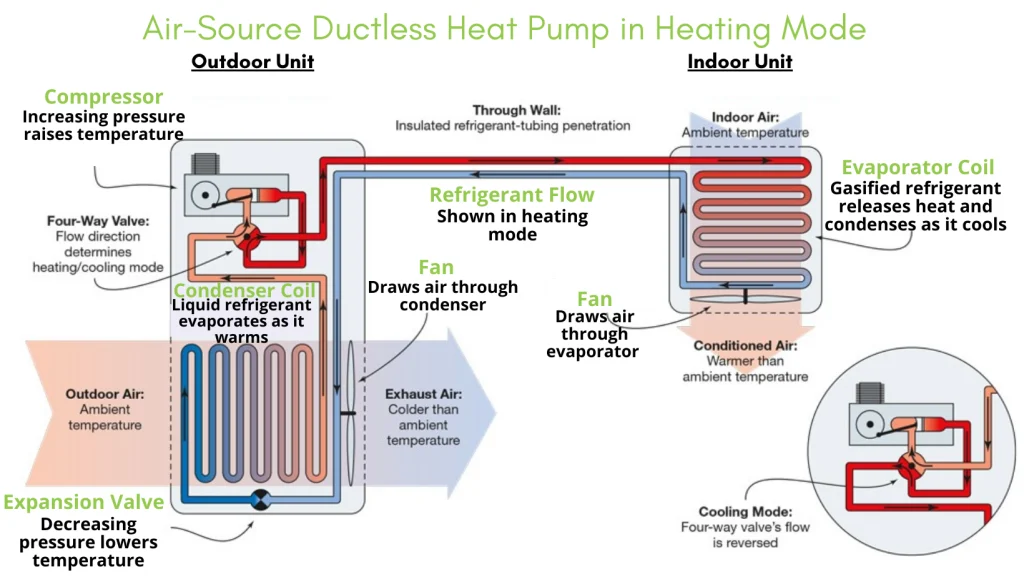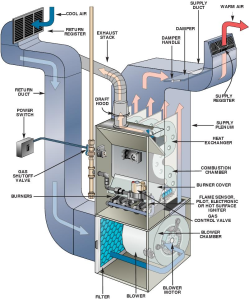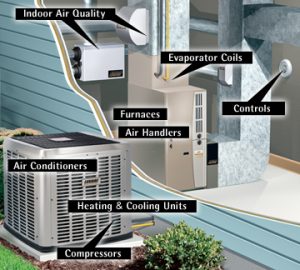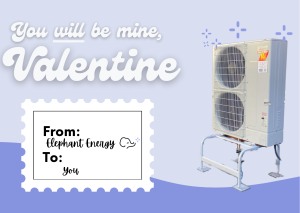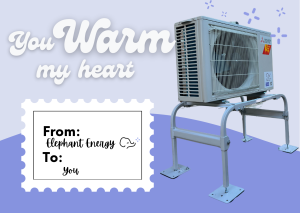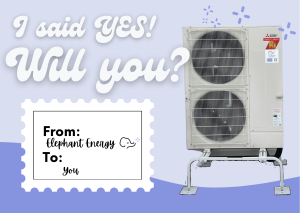Heat pump water heaters are the energy-efficient alternative to traditional electric or gas-powered water heaters. They provide significant savings on your utility bills while also reducing carbon emissions – we love a double-duty worker! As with any home appliance, proper maintenance is important to be sure your heat pump is operating at its optimal performance and will last a long time. Below, we’re sharing our best tips and tricks to perform some DIY maintenance on your heat pump water heater, showcasing our printable heat pump water heater guides, as well as letting you know when it’s time to call in the big dogs (that’s us. The big Elephants?)
Understanding Your Heat Pump Water Heater:
Before we dive into the depths of all that your heat pump water heater has to offer, we think it’s even more important you know the basic functions of how it works. Instead of relying on conventional direct heating elements or burners like a gas or electric water heater, heat pump water heaters extract heat from the ambient air around it and transfers that heat into the water tank. This process utilizes the components inside of the heat pump water heater, like the compressor, refrigerant, and the tank itself that stores hot water. Making sure that all of these items are at their best ensures optimal efficiency for your heat pump water heater for years to come.
Tips for Heat Pump Water Heater Self-Maintenance:
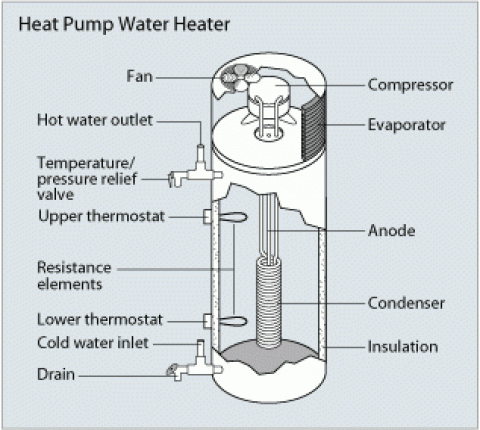
1 – Regularly Check and Clean Air Filters:
Your heat pump water heater has an air filter, which works to prevent dust and debris from accumulating on the coils. By checking these filters regularly (we’re talking monthly, set a calendar reminder!) and cleaning them out, you’ll maintain optimal airflow. If you find cleaning isn’t doing the trick, be sure to order replacement filters. Restricted airflow will reduce your heat pump water heater’s efficiency along with increasing energy consumption.
2 – Inspect and Clean Condenser and Evaporator Coils:
Heat is transferred in your water heater via the condenser and evaporator coils, and if dust and dirt build up on them, it will reduce your water heater’s efficiency. By inspecting the coils on your heat pump water heater, you can ensure they’re clean and efficient. The coils can be cleaned with a soft brush or a vacuum cleaner – be sure to avoid harsh chemicals or any abrasive materials as they can easily damage the coils.
3 – Maintain Adequate Clearance:
When your heat pump water heater is installed by Elephant Energy, we make sure it has adequate clearance surrounding it to allow for proper airflow. It’s up to you to keep it up – remove any obstructions like boxes, furniture, or debris that can block and restrict airflow to the unit. It’s crucial for the heat pump water heater’s function that you have optimal heat exchange and efficiency, so find a new spot to stack up your holiday decorations and boxes of photo albums!
4 – Check the Anode Rod:
The anode rod for your heat pump water heater is a sacrificial component that helps prevent corrosion inside the water heater tank. Inspect the anode rod annually and replace it if it’s corroded or worn out. A correctly functioning anode rod can extend the lifespan of your water heater and prevent costly tank repairs down the road.
5 – Monitor Temperature and Pressure:
Regularly check the temperature and pressure relief valve on your heat pump water heater to ensure it’s functioning correctly. Test the valve by lifting the lever briefly to release a small amount of water. If the valve fails to operate or leaks persistently, replace it immediately to prevent potential water hazards.
6 – Flush the Tank Annually:
Over time, sediment and mineral deposits can accumulate at the bottom of the heat pump water heater tank, reducing its efficiency and lifespan. By draining and flushing the tank annually, you’ll remove these deposits and maintain optimal performance. Follow the manufacturer’s instructions for draining and flushing your specific model.
7 – Insulate Hot Water Pipes:
Insulating the hot water pipes connected to your heat pump water heater can help reduce heat loss and improve overall efficiency. Use foam pipe insulation sleeves to cover exposed pipes, especially in unheated areas such as basements or crawl spaces.
Looking for more information regarding best practices, frequently asked questions, and troubleshooting? Download our user guides, made in house by our team of HVAC experts, here:
When to Call in the Experts:
As listed above, there’s a ton you can do as a homeowner to maintain your heat pump water heater by yourself. However, it’s good to know what situations call for professional experience:
1 – Electrical or Mechanical Issues:
If you encounter any electrical or mechanical problems with your heat pump water heater, such as compressor failure or motor issues, it’s best to contact a qualified HVAC technician. Attempting to repair complex components without proper training and tools can be dangerous and may void your warranty.
2 – Warranty Coverage:
By choosing Elephant Energy to install your heat pump water heater, you’ll receive a one year labor warranty. You’ve also got a ten year parts warranty for any part or equipment failures. Keep in mind, it’s imperative that you follow the manufacturer’s recommended maintenance guidelines and seek authorized service providers for repairs. Attempting DIY repairs or neglecting maintenance could void your warranty and leave you liable for repair costs.
Continual, regular maintenance is key to both maximizing the performance and lifespan of your heat pump water heater as well as ensuring you’re keeping a climate-friendly home running its best. Take the time to read and revisit this guide for our DIY tips, to download our helpful user guides, and to remind yourself when it’s best to call in the experts. With the right care and attention, your heat pump water heater will provide reliable hot water for years to come, all while helping you do your part in decarbonizing as well as saving money, too!
–
Ready to get started? Join us in building a brighter future by electrifying everything, starting with homes. Your choice today shapes our collective tomorrow!
